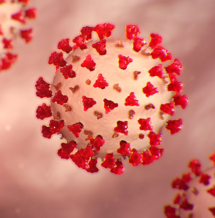Interactive maps of giving to, from United Ways, Community Foundations help donors, policy makers, public identify gaps, ways to partner on local needs
Indianapolis—COVID-19 relief funds at local United Ways and community foundations across the United States raised more than $1.05 billion and distributed at least $589 million to financially vulnerable individuals and nonprofits leading the pandemic response in their communities as of June 30, according to research led by nationally respected community philanthropy expert Laurie Paarlberg, Ph.D., of the Indiana University Lilly Family School of Philanthropy at IU Indianapolis.
Paarlberg and her colleagues also identified 1,119 such organizations supporting COVID-19 funds, 244 of which are jointly supported in partnership with at least one other neighboring United Way or community foundation.
Both the number of funds and the amount of money raised are estimates and likely under report the magnitude of this type of community philanthropy, as only about 60% of funds currently are reporting these numbers publicly, explained Paarlberg, who is the Charles Stewart Mott Foundation Chair on Community Foundations at the school. Organizations that would like to provide information about their COVID-19 relief fund and how community philanthropy has responded to the pandemic in their area can complete a form on the project website, which will be updated regularly.
“Our team is mapping these local COVID-19 relief funds to show where and how United Ways and community foundations all over the country are responding to the threat and impact of the pandemic, helping nonprofits, individuals and families in the communities they serve,” Paarlberg said. “Our work helps us understand the role community philanthropy organizations play in responding to the immediate and long-term needs of local communities.”
Interactive maps on the project’s website provide detailed information about the COVID-19 funds managed by local United Ways and by community foundations nationwide, including a description of each fund, its purposes, partners, amounts raised and granted as of June 30 and contact information.
The research provides key insights that can help address local community needs:
- The public and prospective donors can locate relief funds in their community and better understand the work local philanthropic organizations do within their communities.
- Other foundations and philanthropic funders can identify gaps they may be able to help address, as well as potential partners.
- Policy makers can learn about the many roles community philanthropic organizations play in local response and recovery and identify potential ways to partner with and support these voluntary efforts.
Community philanthropy plays an important role in understanding local communities’ unique needs and responding to them quickly and flexibly. As COVID-19 began to spread in early 2020, numerous community foundations and United Ways quickly established new funds or activated existing emergency response funds to be able to respond to long-term and short-term community needs. Many of these efforts include collaborations with other community partners, such as other philanthropic funders, local corporations and local government.
“Each community will take a different approach to identifying needs,” Paarlberg said. “Some communities are prioritizing keeping nonprofits on the front lines of response afloat, while other funds are focusing on providing charitable relief to vulnerable populations affected by the crisis. The funds’ responses reflect local context and local priorities.”
The research project team includes Paarlberg; Marlene Walk, Ph.D., assistant professor of Public Affairs at the Paul H. O'Neill School of Public and Environmental Affairs and affiliate faculty member of the Lilly Family School of Philanthropy, both at IU Indianapolis; Megan LePere-Schloop, Ph.D., assistant professor in the John Glenn College of Public Affairs at The Ohio State University; Lilly Family School of Philanthropy doctoral students Jin Ai and Yue Ming; and IU Indianapolis students Cherilyn Horning and Rachel Keplar.
The community relief funds research is the first to be released among several Lilly Family School of Philanthropy research projects examining Americans’ philanthropic response to the COVID-19 crisis. Results of additional studies will be released throughout 2020.
About the Indiana University Lilly Family School of Philanthropy
The Lilly Family School of Philanthropy at IU Indianapolis is dedicated to improving philanthropy to improve the world by training and empowering students and professionals to be innovators and leaders who create positive and lasting change. The school offers a comprehensive approach to philanthropy through its academic, research and international programs and through The Fund Raising School, Lake Institute on Faith & Giving, the Mays Family Institute on Diverse Philanthropy and the Women’s Philanthropy Institute. Follow us on Twitter, LinkedIn or Instagram and “Like” us on Facebook.


